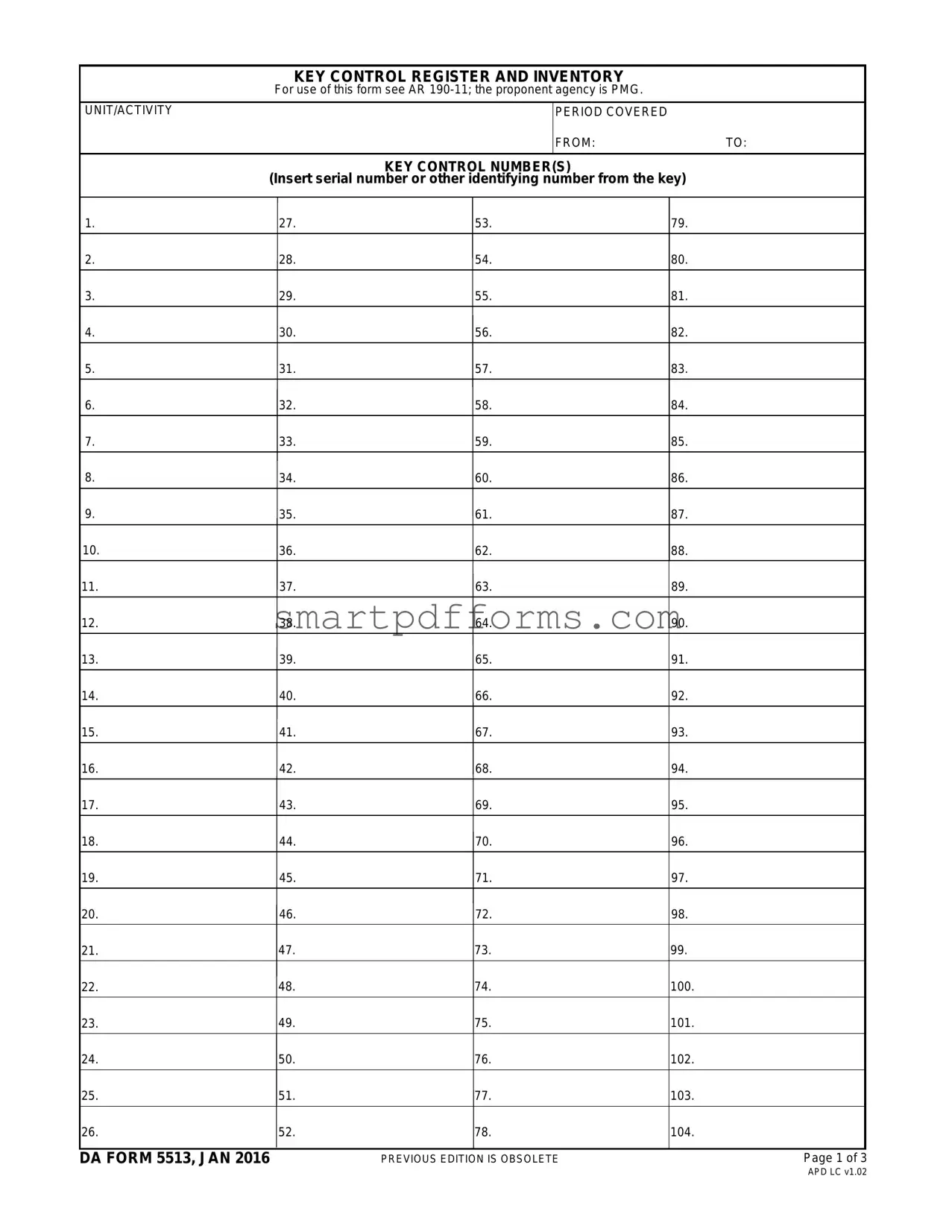The DA Form 5513, known officially as the Key Control Register and Inventory, is an essential document for maintaining accountability and control of keys within military installations and operations, as mandated by Army Regulation 190-11. The intricacies of managing keys, which may seem mundane to the untrained eye, are critical for ensuring the security and integrity of sensitive areas and equipment. The form serves as a comprehensive record, tracking the issuance, return, and inventory of keys, bridging the gap between physical security measures and administrative oversight. From assigning key control numbers to documenting the individuals responsible for issuing and receiving keys, the form encapsulates a meticulous approach to safeguarding access to critical infrastructure. The period the document covers, alongside the specific details recorded for each key, highlights the Army's commitment to detail and accountability. Furthermore, the inclusion of inventory sections for joint or semiannual audits emphasizes the ongoing nature of key control, ensuring that every key is accounted for regularly. As a crucial component of military procedure, the DA Form 5513 underscores the balance between operational necessity and security, providing a structured method to manage access controls within the armed forces.



